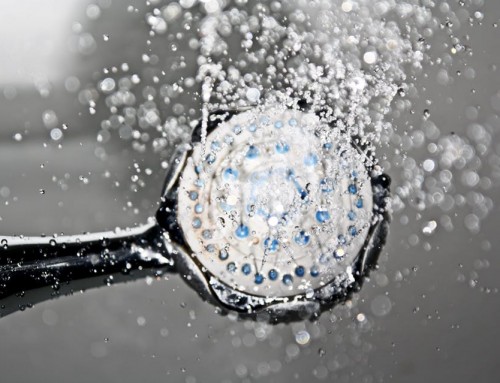When you get up in the morning, the first thing on your mind likely isn’t working out your vagina.
But maybe it should be.
If you’re not doing your Kegel exercises — or squeezing the muscles of your pelvic floor — you’re only hurting yourself long term.
We’ve compiled a compressive guide on how to do Kegels and why a regular vagina workout is so important.
Let’s get started!
What Exactly Are Kegel Exercises?
Kegels are exercises designed to strengthen the muscles that support your rectum, small intestine, bladder, and uterus.
Kegel exercises do more than just keep the muscles of your pelvic floor fit. They also help to prevent embarrassing accidents — for example, passing gas or stool and even bladder leakage.
On top of that, they can make every one of your future orgasms that much better.
Why a Vagina Workout Works
When your pelvic floor muscles are working properly, you likely don’t think about them. However, as you age, these muscles may begin to weaken.
What does this mean for you? It means you run the risk of suffering from a condition known as pelvic organ prolapse, or POP.
Simply put, the organs in your pelvic area will begin to droop and thus fall out of or into your vagina.
For those who’ve undergone hysterectomies — a type of pelvic area surgery — the tissues in their vaginal areas may even begin to fall out of their bodies, too.
Here are a few other factors that increase your chances of suffering from POP:
- Vaginal birth
- Experiencing pregnancy
- Genetics
- Cesarean section
- Frequent sneezing, coughing or laughing (as this pushes on your pelvic organs)
You may also suffer from POP if you experience excessive straining due to constipation or are overweight.
Who Do Kegels Benefit the Most?
Kegel exercises may especially benefit you if you suffer from stress continence, where you leak urine drops while coughing, sneezing or laughing.
Those who suffer from urinary or fecal continence can also benefit from doing Kegels. With the former, you have a sudden, strong urge to release urine just before you lose a large quantity of it. With the latter, you have a tendency to leak stool.
Note that you can perform Kegel exercises either after childbirth or during pregnancy to prevent issues with urinary incontinence.
However, Kegels may not help you much if you leak urine severely. In addition, these exercises might not help you if you suffer from overflow incontinence, where you unexpectedly leak tiny quantities of urine because your bladder is full.
The Kegel Process
To perform Kegel exercises, sit on your toilet and attempt to urinate. Once pee starts to come out, squeeze the muscles in your vaginal area to hold the pee in.
You’ll know you’ve identified the muscles of your pelvic floor if you’re able to stop peeing midstream. At that time, you should experience the sensation of your vaginal muscles lifting.
Congratulations! You’ve got one Kegel exercise under your belt, so to speak.
Now, it’s time for you to relax your vaginal muscles and do another Kegel.
Once you’ve got your Kegels down in your bathroom, you can start doing them anywhere and everywhere you go throughout the day. Try to avoid doing these exercises on your toilet in the future, as this may lead to urinary tract infections.
You can perform Kegels in virtually any position, but you may find it easier to do these exercises while lying down on the couch or floor starting out. Then, feel free to perform them as you brush your teeth, eat dinner, watch television, sit at your classroom desk or even drive to work.
Also, try to perform 10 Kegels consecutively, squeezing your muscles for three seconds and then release them for three seconds each time. Try to do three sets of 10 Kegels each day.
As you perform your Kegels, stay focused on tightening just the muscles on your pelvic floor, not your abdomen, buttocks or thighs. In addition, don’t hold your breath. Rather, breathe freely as you perform your exercises.
Need Help with Your Kegels?
A majority of women who perform Kegel exercises begin to see results within a handful of months or weeks.
If you’re struggling with the Kegel process, don’t feel embarrassed about asking for assistance. Your doctor can provide you with the valuable feedback you need to properly isolate and workout the right muscles.
Your doctor could even take things further by giving you biofeedback.
During this type of feedback session, the doctor would place a pressure sensor in your rectum or vagina. Next, you would relax the muscles of your pelvic floor and then contract them. A monitor would measure and show the activity taking place on the pelvic floor, which may help your doctor to assist you with your Kegel exercises more effectively.
If you’re concerned that you are still not seeing improvement, consider using a Kegel trainer, such as the one available through Yarlap. It’ll do the exercising work for you.
Kegel trainers feature specialized technology to help to tone and strengthen your pelvic floor’s muscles.
With the Yarlap device in particular, the device is cleared by the Food and Drug Administration. Women can expect to experience results in two to 12 weeks and may find the device helpful even if they struggle with severe incontinence.
How We Can Help
In addition to explaining how to do Kegel exercises, we offer a wide range of other tips and advice designed to help women to feel happier and more beautiful.
For instance, through our site, you can learn how to eliminate wrinkles with a proper diet and even how organic hemp may help your health. We also show you easy ways to remove facial hair and get rid of acne.
With our help, you can even find out how to choose the right plastic surgeon.
Get in touch with us today to find out more about how we can help you to perform a vagina workout properly and enjoy all other aspects of your life to the fullest.











